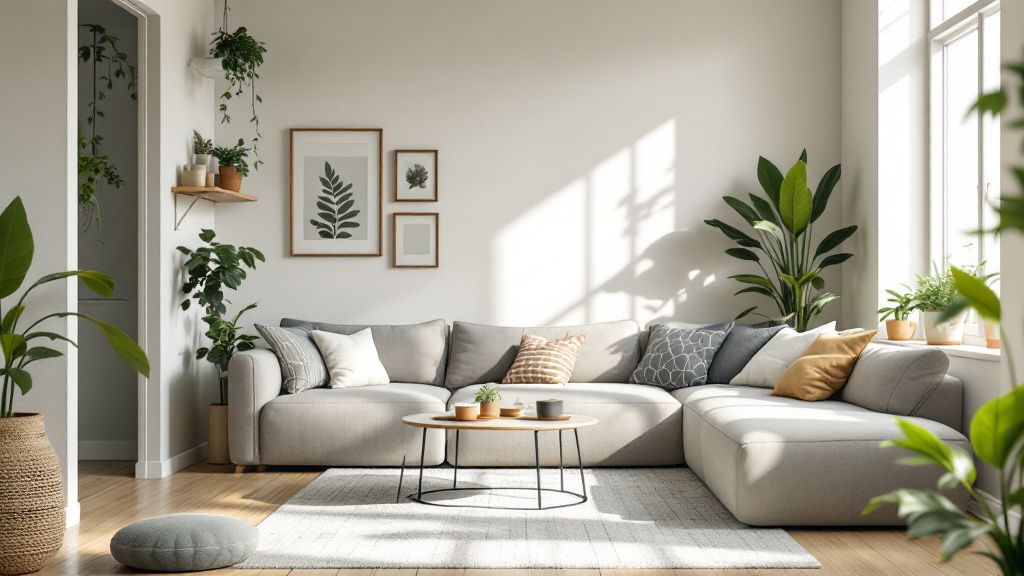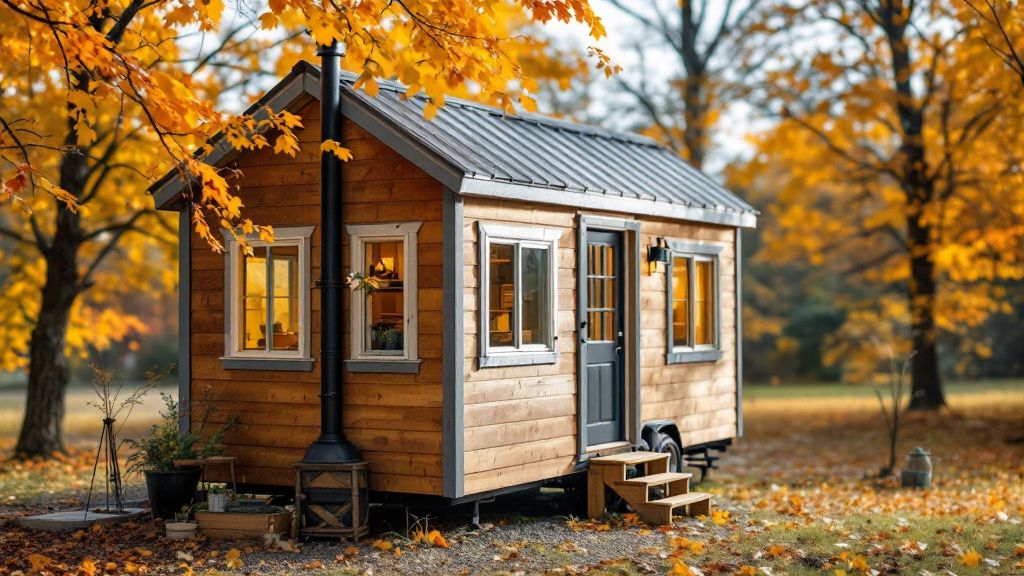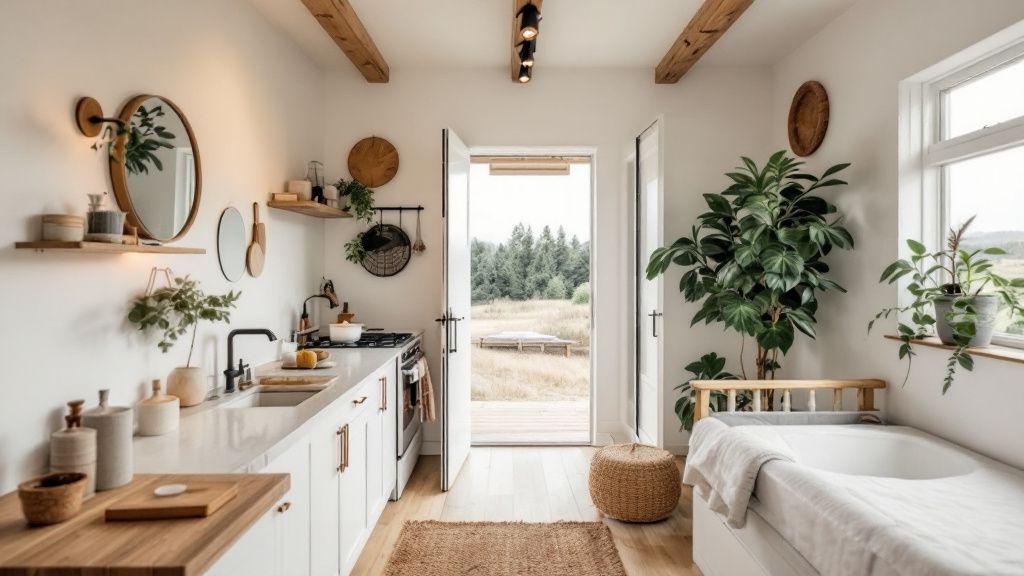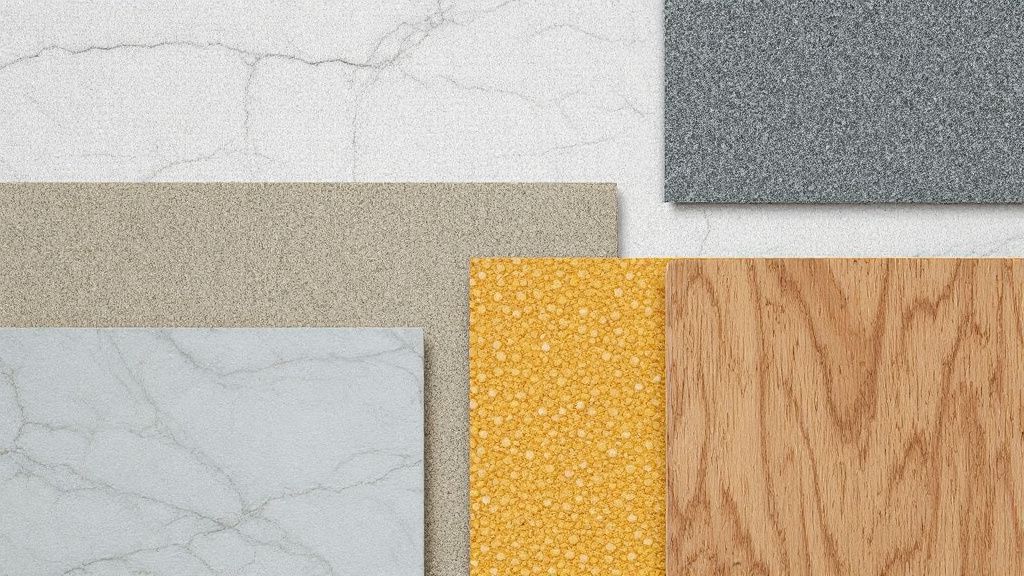Crafting Your Dream Space in a Tiny House
- California Tiny House
- 4 days ago
- 6 min read
Envision stepping into a world where less is more, and every square inch is meticulously planned to reflect your personality and needs. In a tiny house, thoughtful design becomes paramount; here, you're the architect of your cozy retreat. Embrace creativity with innovative tiny home designs that maximize space without sacrificing style or comfort. Imagine a seamless blend of functionality and aesthetics within your tiny house interior design—clever storage solutions and multipurpose furniture transform limited areas into spacious sanctuaries. Consider the tiny house layout where zones subtly flow into one another, catering to both daily routines and spontaneous moments of joy. Living in a tiny house on wheels further expands your horizons, offering the freedom to redefine your surroundings as you journey through different landscapes. By tailoring these elements, you craft a dream space that embodies charm and convenience, making every moment spent inside meaningful and fulfilling.

Understanding the Tiny House Movement
The tiny house movement is more than just a trend; it's a lifestyle choice embraced by those seeking simplicity and sustainability. By downsizing, you focus on what truly matters, crafting a home that reflects your values and creative vision. Tiny homes encourage a minimalist approach, offering freedom from clutter while allowing you to enjoy a uniquely personalized tiny house layout.
While many view tiny homes as overly restrictive, there’s a compelling argument for their adaptability and efficiency. You can integrate innovative tiny house interior design features such as built-in storage and foldable furnishings that make the most of limited space. These design choices offer not just a practical solution to space constraints but also encourage creative living.
The appeal of a tiny house on wheels extends beyond its compact footprint, presenting the opportunity for mobility and adventure. With your home in tow, you can discover new places without the burden of conventional homeownership. This aspect of the movement highlights the potential for flexibility in your lifestyle, allowing your home to grow with you.
Exploring various tiny home designs opens doors to customization and self-expression. From modern aesthetics to rustic charm, the movement provides diverse styling options. This diversity ensures that, regardless of your taste and needs, there’s a tiny house waiting to be crafted not just as a home but as an embodiment of your dream space.

Benefits of Living in a Small Space
Living in a small space offers a multitude of benefits that extend beyond just economizing your living arrangements. Embracing a tiny house lifestyle means nurturing a close connection with your environment, as every piece of your home is curated to enhance comfort and functionality. With a thoughtfully planned tiny house layout , you focus on the essentials, resulting in reduced clutter and more efficient living. This streamlined approach allows you to maximize your resources, from energy consumption to maintenance efforts.
Tracing its evolution from the minimalist design movements of the late 20th century, the tiny house movement has grown into a symbol of sustainability and individual freedom. The flexibility of a tiny house on wheels adds to its allure, enabling you to explore new locales without ever leaving the comfort of your home. As urban areas become increasingly dense, these small spaces offer a viable solution for people wanting to reduce their ecological footprint while still enjoying modern amenities.
The benefits extend to personal well-being, as the cozy confines of a tiny house encourage a simpler, more intentional lifestyle. With a focus on quality over quantity, you can invest in high-quality materials or tailor your tiny house interior design to reflect your personal style. This flexibility ensures that your living space becomes a true reflection of your priorities, promoting a lifestyle that's both rewarding and fulfilling.

Tiny House Regulations and Zoning Laws
Navigating tiny house regulations and zoning laws requires an understanding of how these rules vary widely across different regions. Local authorities often have specific criteria that tiny home designs must meet to qualify as legal residences. These criteria can include minimum square footage, safety standards, and construction methods. It's crucial to research your local area’s codes and consult with experts to ensure your tiny house complies with existing regulations.
To truly grasp the complexities of tiny house regulations, you need to shift your mindset from traditional housing norms to a more flexible and adaptive perspective. Unlike conventional homes, tiny houses often challenge existing zoning laws which were not designed with such compact living in mind. This shift empowers you to engage with community planners and seek amendments or variances that support sustainable and innovative housing solutions.
For those dreaming of a tiny house on wheels , additional considerations come into play. Classified differently from stationary homes, these mobile residences may be subject to RV regulations instead. This unique classification affects where you can park your home, impacting everything from backyard setups to long-term positioning within RV parks or dedicated tiny house communities. Understanding these distinctions helps you make informed decisions about where and how you live.

Essential Design Principles for Optimization
Designing a tiny house requires a thoughtful approach, balancing aesthetics with functionality to create a comfortable yet efficient living space. Start by focusing on maximizing natural light, which can make even the smallest area feel open and inviting. Large windows or strategically placed skylights enhance the ambiance and improve mood, turning your tiny space into a bright and cheerful environment.
One key principle is to invest in multi-functional furniture, a cornerstone of tiny house interior design. Each piece should serve multiple purposes, such as a sofa that converts into a bed or a foldable dining table. This approach ensures every item has a defined role and contributes to a clutter-free area, allowing you to fully utilize the space available in your tiny house layout.
One unpopular opinion regarding tiny home designs is that sacrificing aesthetics for functionality isn’t necessary. While practicality is important, a tiny home can still reflect your personal style. Incorporating unique design elements and color schemes can add character and warmth, making your tiny house both functional and beautifully personalized.
Incorporating vertical space is another essential design principle, especially in a tiny house on wheels. Shelves or loft-style living arrangements can drastically increase storage and usability without increasing your home's footprint. Consider using wall-mounted storage solutions to keep your living area free from unnecessary obstructions, thus optimizing your floor space.
Prioritize a cohesive design that connects different areas seamlessly. Whether it's through color continuity or architectural design elements, making sure each section flows into the next creates a harmonious and connected feel. This cohesion not only enhances the aesthetics but also contributes to a more organized and visually appealing space.

Choosing the Right Materials for Tiny Homes
Selecting the right materials for your tiny home is crucial in crafting a space that balances durability, weight, and aesthetic appeal. Opt for lightweight, high-strength materials such as aluminum or bamboo, which offer excellent support without adding unnecessary bulk. These choices help you maintain a sustainable tiny house layout, optimizing the limited space while ensuring the structure remains mobile if positioned on wheels.
The current state of tiny home design shows an increasing trend toward eco-friendly and recycled materials. Homeowners are more inclined to use reclaimed wood or recycled metal, aligning with the movement towards sustainable living. These materials not only reduce the environmental impact but also add a unique charm to your tiny house interior design, reflecting a commitment to both style and conservation.
When crafting a tiny home, selecting materials that enhance insulation and energy efficiency is paramount. Consider using spray foam or sheep’s wool insulation, which offers excellent thermal performance. This focus on energy-saving materials keeps your home comfortable through various seasons, all while maintaining the lightweight nature essential for a tiny house on wheels.

Designing for Energy Efficiency and Sustainability
Designing for energy efficiency and sustainability in a tiny house is a crucial endeavor that can significantly reduce your carbon footprint while enhancing comfort. By focusing on energy-saving techniques, such as installing solar panels or utilizing high-efficiency appliances, you conserve resources and cut down on utility costs. These choices make your tiny home a model of sustainable living, seamlessly integrating eco-friendly practices into everyday life.
Think of your tiny house layout as a finely tuned orchestra. Just like musical instruments must play in harmony, each element of your tiny home works together to create a symphony of energy efficiency. From strategically placed windows that capture natural light to optimizing airflow for ventilation, these intricate details ensure that your tiny house on wheels remains both comfortable and eco-conscious.
Implementing sustainable materials and technologies such as rainwater harvesting systems or composting toilets further emphasizes ecological responsibility. These features contribute to a self-sufficient lifestyle, reinforcing your commitment to preserving the environment. Embracing sustainability in your tiny house interior design not only protects natural resources but also transforms your living space into an inspiring example of modern, responsible design.




